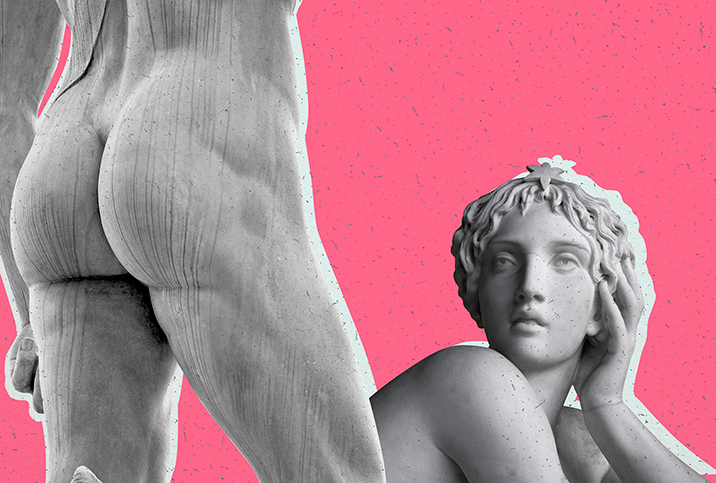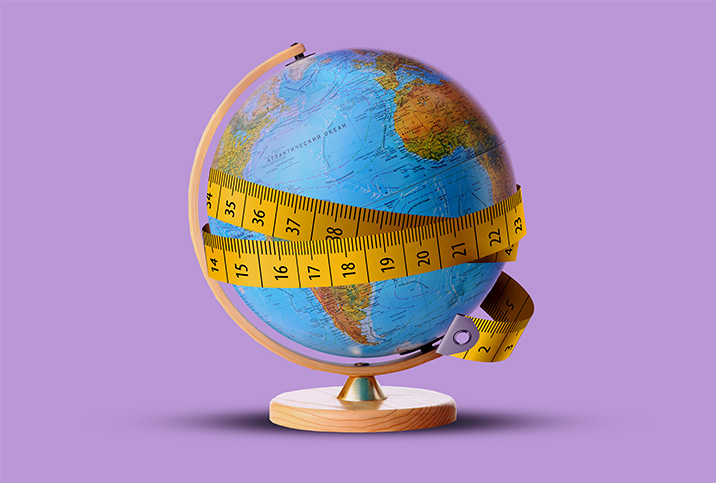The 'Ideal' or 'Pefect' Penis Size Has Evolved Over the Past 700 Years

Italian Renaissance artist Masaccio painted his famous fresco, "Expulsion from the Garden of Eden," on the walls of the Brancacci Chapel in Florence, Italy, in 1425. In the painting, Masaccio depicts Adam and Eve cast out of Eden as Adam hides his face in his hands, with his uncircumcised penis exposed.
Adam's penis size was characteristic of artwork at the time. The Renaissance period witnessed a resurgence of Greco culture, when artists drew inspiration from the ancient Greek ideal of "small, taut" genitals with long foreskins.
Since Masaccio's time, the "ideal" penis has evolved dramatically, specifically, when it comes to size. That's according to a new study published in the journal BJU International, which compares the penis lengths of nude males depicted in paintings across the past 700 years.
The evolution of the 'ideal' penis size
Penis size in historical paintings has increased quite a bit over time, according to one of the study's authors, Ege Can Serefoglu, M.D., a professor of urology at Biruni University School of Medicine in Istanbul.
"We have demonstrated that the size of the ideal penis as represented in artwork seems to have increased in size throughout recent history, particularly in the 20th and 21st centuries," Serefoglu said in an email conversation.
The increase in painted penis size parallels changing societal perceptions of the ideal penis size, according to Serefoglu.
The study
Serefoglu and a team of researchers gathered 232 paintings of nude males. The researchers started their analysis in the 15th-century Renaissance period, an era that saw a revival of nude art, according to study researcher Murat Gül, M.D., an associate professor of urology at Selcuk University School of Medicine in Konya, Turkey.
"Starting from the Renaissance period, many cultures tolerated nudity in the art to a greater extent," Gül said. "Due to the influence of the Church on art, very few pictures of naked men have survived from earlier periods."
After omitting 72 paintings that featured depictions of adolescents or an erect penis, the team was left with a sample size of 160 flaccid phalluses spanning from 1394 to 2019.
"We did not consider other types of art, such as sculptures, in our evaluation of penis size perception throughout the centuries, as these types of artworks are extremely difficult to assess accurately for penis depiction ratio," Gül noted.
To standardize measurements, the research team calculated penile length to ear length (PtEL) or penile length to nose length (PtNL) in the paintings. When ear length was not available, the researchers relied on nose length, which is considered equal to ear length, according to the golden ratio, a mathematical equation that determines harmony and proportion in aesthetics.
"The golden ratio is a numerical and geometric tool frequently used in various fields, including art, architecture, mathematics and geometry," Gül said. "In our study, the face of the male depicted in the paintings was assessed to ensure that it fitted the proportions of the golden ratio, which showed that the image was correctly and realistically proportioned. Then penile length to ear length or penile length to nose length was calculated to determine the size of the penis in proportion to the face depicted."
The researchers divided their paintings into three groups according to the historical development of art: the Renaissance period (1400 to 1599; 15th through 16th centuries), the Baroque-Rococo and Impressionism period (1600 to 1899; 17th through 19th centuries) and the Contemporary Art period (1900 to 2020; 20th and 21st centuries).
The researchers observed a slight decrease in penis size in the late Renaissance, Baroque-Rococo and Impressionism periods, but said these changes were not statistically significant.
"On the other hand, the depicted penis sizes dramatically increased in the Contemporary Art period and 21st century," Serefoglu said.
What's behind the rise in depicted penis size?
"One explanation could be the widespread use of the internet and exposure to other media, which perpetuate the association between penis size and masculinity, strength and partner satisfaction," Serefoglu said.
He expressed his concern that the representation of the penis as a larger, possibly unrealistic ideal in contemporary media might contribute to feelings of inadequacy and dissatisfaction with penis size in modern men.
Gül agreed, pointing out that a rising number of men are seeking to undergo costly and potentially hazardous surgeries for penis augmentation and enlargement.
"In the media, a large penis is often depicted as being desirable," Serefoglu said. "If historical and contemporary artwork are considered to represent the ideal in a similar way to modern media, the perception of phallus size and the size that is considered to represent the male ideal seems to have altered throughout the centuries, alongside evolution in cultural differences.
"Further studies are needed to define the motivations and consequences of this penis perception today," he said.


















